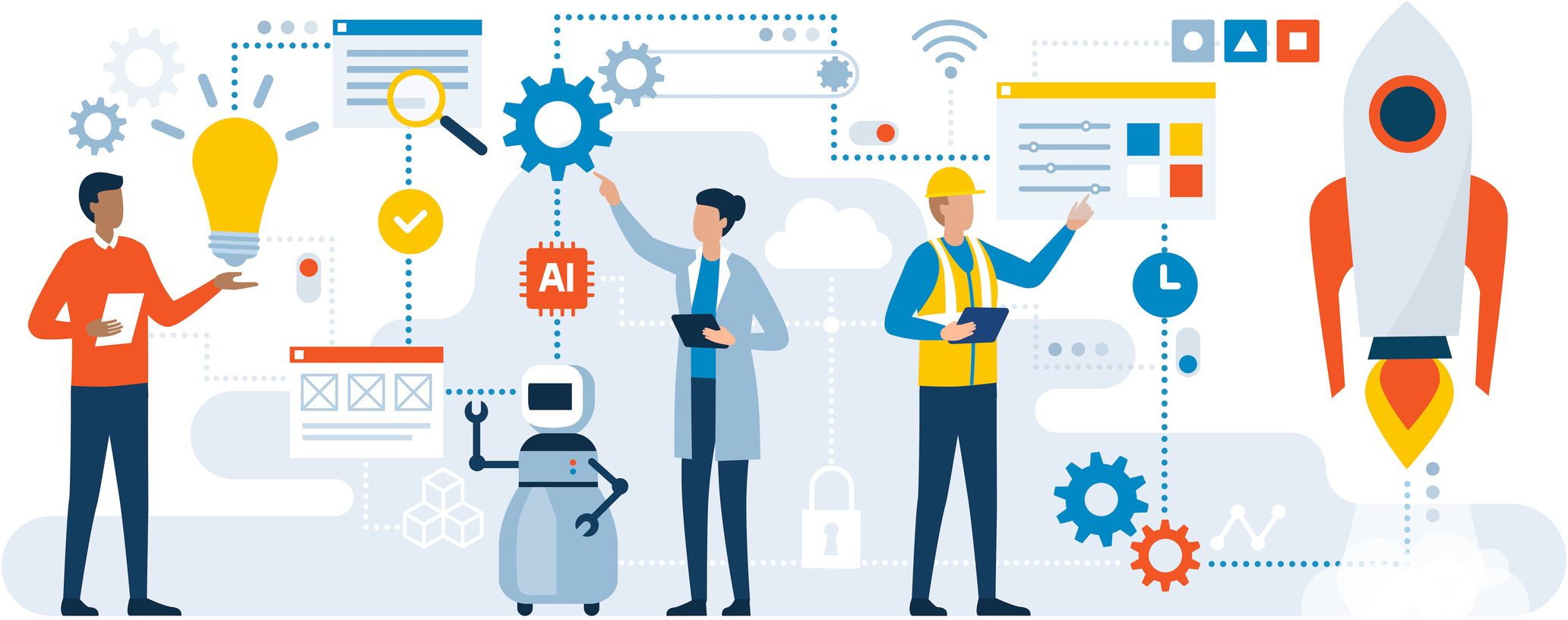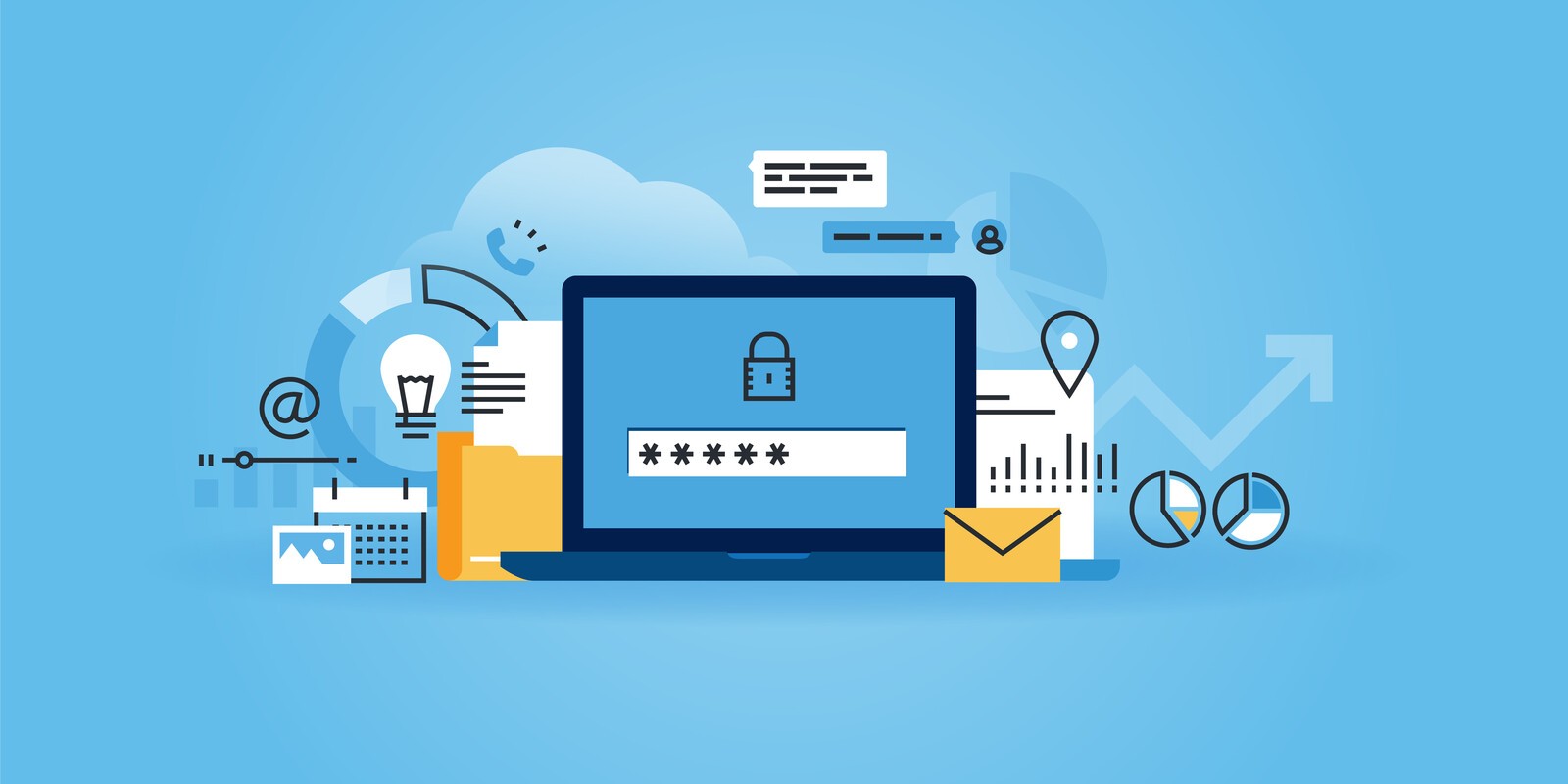Web development trends represent the evolving techniques, tools, and practices used to create and design websites, shaping the way users interact with the online world. These trends are the response to continuously changing user expectations and preferences, technological advancements, and the ever-evolving landscape of the internet. Staying up-to-date with the latest trends in web development is crucial for businesses, developers, and designers aiming to create websites that stand out in a saturated digital market, offering innovative solutions and optimal user experiences.
Understanding and implementing the latest web development trends is not merely a competitive advantage but a necessity. It enables developers to build websites that are not only visually appealing and user-friendly but also equipped with the latest features and functionalities, ensuring that the websites remain relevant and are aligned with industry standards. This alignment is crucial in meeting user expectations, driving traffic, fostering user engagement, and ultimately, achieving long-term success in the online space.
Top Trends Redefining Web Development
Web development trends and technologies emerging in are reflective of a broader shift towards more user-centric, secure, and versatile web solutions. These trends are not merely fleeting; they are shaping the foundational structures and functional ethos of modern web development, setting the stage for a more interconnected, accessible, and dynamic web.
Artificial Intelligence (AI) and Machine Learning (ML)
The infusion of Artificial Intelligence and Machine Learning into web development is changing the game by introducing a new level of personalization and user experience. These technologies enable the development of web solutions that can learn from and adapt to user behaviours and preferences, delivering highly personalized content and interactions.
For instance, AI-powered chatbots and virtual assistants are becoming commonplace, offering instant support and streamlined experiences to users. They are capable of understanding user queries, learning from interactions, and providing accurate and helpful responses, thereby enhancing user satisfaction and engagement.
Machine learning algorithms are instrumental in analyzing user data to identify patterns and preferences. This analysis allows websites to offer personalized content, recommendations, and features, improving user engagement and conversion rates. For example, e-commerce websites utilize these technologies to recommend products and services based on users' browsing histories and preferences, significantly impacting user experience and sales.
Learn More About AI / ML
Blockchain
Blockchain is not just a foundation for cryptocurrencies; it’s making waves in web development with its unparalleled security and transparency features. The integration of blockchain technology is instrumental in developing decentralized applications (dApps) that are not owned by any single entity and are resistant to censorship.
One of the notable benefits of integrating blockchain is enhanced security. The decentralized nature of blockchain makes it exceedingly difficult for hackers to manipulate or alter the data, thus ensuring the integrity and security of the applications. For instance, blockchain can be used to secure user identity, making identity theft and unauthorized access nearly impossible.
Blockchain applications offer transparency and immutability. Every transaction is recorded on the blockchain and is visible to all users, fostering trust and accountability. For instance, supply chain applications leverage blockchain to track the production, shipment, and receipt of products in real-time, allowing users to verify the authenticity and origin of the products.
Learn More About Blockchain
Progressive Web Apps (PWAs)
The rising popularity of Progressive Web Apps (PWAs) can be attributed to their ability to deliver a high level of performance and reliability. PWAs represent a significant advancement in web development, combining the best features of web and mobile applications, offering a user experience that is smooth, fast, and consistent.
PWAs are renowned for their offline access and improved performance, thanks to the service workers that enable them to load instantly, regardless of the network condition. This feature is particularly beneficial for users with poor or unstable internet connections, allowing them to interact with the web app even when offline and ensuring a seamless user experience.
Another substantial benefit of PWAs is the ability to send push notifications, which significantly enhances user engagement and retention. E-commerce platforms, news websites, and social media platforms are leveraging PWAs to keep users informed and engaged with real-time updates, news, and offers.
API-First Development
API-First Development is emerging as a pivotal trend in web development, reflecting a shift in focus towards creating robust Application Programming Interfaces (APIs) before developing the actual software. This approach is fundamental in fostering compatibility and interaction between multiple software intermediaries, thereby enhancing the user experience across various platforms.
The adoption of API-first development brings several advantages, including streamlined development processes and enhanced flexibility. Developers can create APIs that allow seamless integration and interaction between different software components, ensuring consistency and compatibility across various devices and platforms.
By implementing API-first development, organizations can ensure that the applications are developed with interoperability in mind, enabling different software components to communicate and operate harmoniously. This approach is beneficial in scenarios like integrating third-party services or developing applications with multiple frontend frameworks.
For example, a content management system (CMS) developed with an API-first approach can effortlessly serve content to web apps, mobile apps, and other platforms, providing a unified and coherent user experience across all mediums. This adaptability and cohesion are pivotal in the contemporary multi-platform digital ecosystem, underlining the significance of API-First Development in modern web development trends.
Learn More About API Development
Internet of Things (IoT)
The Internet of Things (IoT) has firmly entrenched itself as a transformative trend in the web development landscape, enabling an interconnected ecosystem of devices that can communicate and exchange data. This interconnectivity opens up a myriad of possibilities for creating innovative and user-centric applications aimed at enhancing user experience and operational efficiency.
IoT integrations offer a variety of benefits and applications across various sectors. In the healthcare sector, IoT-powered applications can monitor patients' vitals and medical conditions in real-time, ensuring timely and informed medical interventions. In the retail sector, IoT applications enable seamless inventory management and personalized customer experiences through data collected from interconnected devices, like smart shelves and beacons.
The integration of IoT in web development is also driving smart home innovations, allowing users to control home appliances remotely through web applications. This level of convenience and control is ushering in a new era of smart living, where users can interact with their surroundings in more intuitive and meaningful ways.
Edge Computing
Edge computing is emerging as a crucial counterpart to cloud computing, addressing the limitations of latency and bandwidth by processing data closer to where it is generated. This paradigm shift in data processing is pivotal for applications that require real-time processing and analytics, enabling faster and more efficient operations.
The integration of edge computing in web development has many applications and benefits. For instance, in the realm of autonomous vehicles, edge computing allows for the immediate processing of data from various sensors, ensuring real-time reactions and decisions, crucial for the safety and functionality of the vehicles.
Edge computing is instrumental in enhancing the performance of IoT devices by reducing the load on the network and ensuring the swift processing of data. This is particularly beneficial in industrial IoT applications, where immediate data analysis can aid in predictive maintenance, operational efficiency, and downtime reduction.
By leveraging edge computing, developers can create web applications that are more responsive, robust, and efficient, catering to the ever-evolving needs and expectations of users and businesses in the modern digital environment. The integration of edge computing is not just a trend; it’s a necessity in the age of real-time applications and instant data processing, marking a significant stride in the advancement of web development technologies.
Serverless Computing
Serverless computing is making substantial waves in the web development domain, signifying a notable shift in the way developers build and deploy applications. It revolves around the execution of code in response to events, eliminating the need for a permanent infrastructure. This model allows developers to focus solely on their code, leaving the responsibilities of server management, maintenance, and scaling to cloud service providers.
The rise of serverless architectures brings several benefits, among which reduced load times and enhanced user experience stand out. The absence of server management means faster delivery times and agile development processes, enabling developers to swiftly react to market demands and user needs. This also translates to cost efficiency, as businesses only pay for the compute power consumed during the execution of functions, avoiding the costs associated with idle server time.
Serverless computing promotes scalable and flexible development, allowing applications to handle more users seamlessly without the need for manual intervention in scaling operations. This adaptive scaling is particularly crucial in handling sporadic high-load events, ensuring consistent and optimal performance.
Microservices
Microservices architecture is a method of developing software systems that are primarily distinguished by organizational decentralization and division of responsibility. It’s about breaking down an application into a collection of small, autonomous services, each performing a specific business process and communicating over a network.
The integration of microservices in web development has facilitated organizations in achieving enhanced scalability, flexibility, and quicker time to market. For instance, when updating a service, developers can deploy only the service in question without affecting the entire application, reducing the risks and downtime associated with deployments.
The benefits of microservices extend to improved resilience, as the autonomous nature of services means that the failure of one service doesn’t directly affect others. This is particularly advantageous in maintaining high availability and ensuring uninterrupted user experiences.
Microservices allow for the utilization of diverse technology stacks for different services, enabling the adoption of the most suitable technologies for specific needs. This flexibility empowers developers to innovate and experiment, driving the continuous evolution of web development practices.
The utilization of microservices is not merely a fleeting trend; it’s a paradigm shift advocating for modularity and versatility in developing contemporary web applications, aiming to meet the dynamic needs of businesses and users in today's interconnected world.
Infrastructure as Code (IaC)
Infrastructure as Code (IaC) is a key component in the realm of modern web development, allowing developers to manage and provision computing infrastructure through machine-readable script files, rather than through physical hardware configuration or interactive configuration tools. The integration of IaC automates the infrastructure deployment process, making it more consistent and repeatable.
The incorporation of IaC brings forth numerous benefits and applications. It aids in reducing the risk of human error associated with manual configurations, enabling a more stable and predictable deployment process. The automation of infrastructure setup and changes allows for faster development and deployment cycles, enhancing the overall productivity of development teams.
IaC also promotes the principles of DevOps and continuous delivery, fostering collaboration and enhancing the efficiency of development workflows. With its scalability and adaptability, Infrastructure as Code enables organizations to swiftly adapt to changing requirements and market conditions, optimizing resource utilization and reducing operational costs.
Voice Search Optimization
Voice Search Optimization is emerging as a paramount factor in web development, driven by the proliferating use of voice-activated devices and virtual assistants like Siri, Google Assistant, and Alexa. The optimization for voice search is crucial as it offers a hands-free, fast, and user-friendly way to search on the internet, catering to the evolving preferences and needs of users.
The strategies for incorporating voice search optimization involve focusing on natural language, utilizing conversational keywords, and prioritizing long-tail keywords. This approach aligns with the conversational and question-based nature of voice searches, improving the chances of being picked up by voice search algorithms.
The benefits and applications of optimizing for voice search are extensive. It enhances user experience by providing quick and relevant answers, increasing the chances of attracting and retaining users. It also offers a competitive advantage, as websites optimized for voice search are likely to gain higher visibility and traffic in an environment where voice search usage is continually rising.
Optimizing for voice search is becoming non-negotiable for websites aiming to stay relevant and competitive in the modern, user-centric web landscape, where convenience and efficiency are prized.
Learn More About Voice Search Optimization
How to Implement the Latest Web Development Trends
Implementing the latest web development trends and technologies is pivotal for businesses aiming to achieve a competitive edge and deliver superior user experiences.
Assess Your Current Needs and Goals
Start by conducting a comprehensive analysis of your current operational needs and long-term goals. Evaluate your existing web infrastructure, identify areas of improvement, and pinpoint the objectives you aim to achieve with the new technologies. This step is critical to align technology adoption with your business strategy, ensuring relevance and value addition.
Identify the Right Technologies for Your Needs
Once the needs and goals are clear, explore the technologies and trends that align best with them. Research each technology's capabilities, benefits, and potential challenges. Consider technologies like AI and ML for personalized experiences, PWAs for enhanced performance, or IaC for automated infrastructure management, depending on your specific requirements.
Develop a Plan to Implement the New Technologies
With the right technologies identified, formulate a detailed implementation plan. Outline the steps involved, allocate resources, and establish timelines. Ensure that the plan is realistic, achievable, and includes provisions for addressing potential hurdles. It’s crucial to involve relevant stakeholders in this phase to gather insights, ensure alignment with organizational goals, and foster collaboration.
Test and Monitor the New Technologies
After implementing the new technologies, it’s crucial to continuously test their functionality and monitor their performance. Use analytics and other monitoring tools to track the impact of the new technologies on user experience, website performance, and overall business outcomes. Regular testing and monitoring enable early detection of issues and ensure that the implemented technologies are delivering the desired results.
Iterate and Optimize
Based on the insights gathered from testing and monitoring, make the necessary adjustments to optimize the technologies further. Refine your strategies, tweak configurations, and enhance integrations to ensure the technologies are operating at their full potential and are in sync with evolving business needs and market dynamics.
By meticulously following these steps, businesses can successfully integrate the latest web development trends and technologies, paving the way for enhanced user satisfaction, improved operational efficiency, and sustained growth in the digital era.
Staying ahead of the latest web development trends and technologies is no longer a mere advantage; it's a necessity for businesses aspiring to thrive in a constantly evolving digital marketplace. Adapting to and implementing these trends not only elevates user experience but also enables businesses to meet contemporary needs, thus fostering growth, innovation, and long-term success.
Ready to elevate your web presence with the latest web development trends? Submit a request for a proposal or quote from e-dimensionz. Whether it’s integrating advanced technologies or optimizing your site for emerging trends, we are here to to help.




